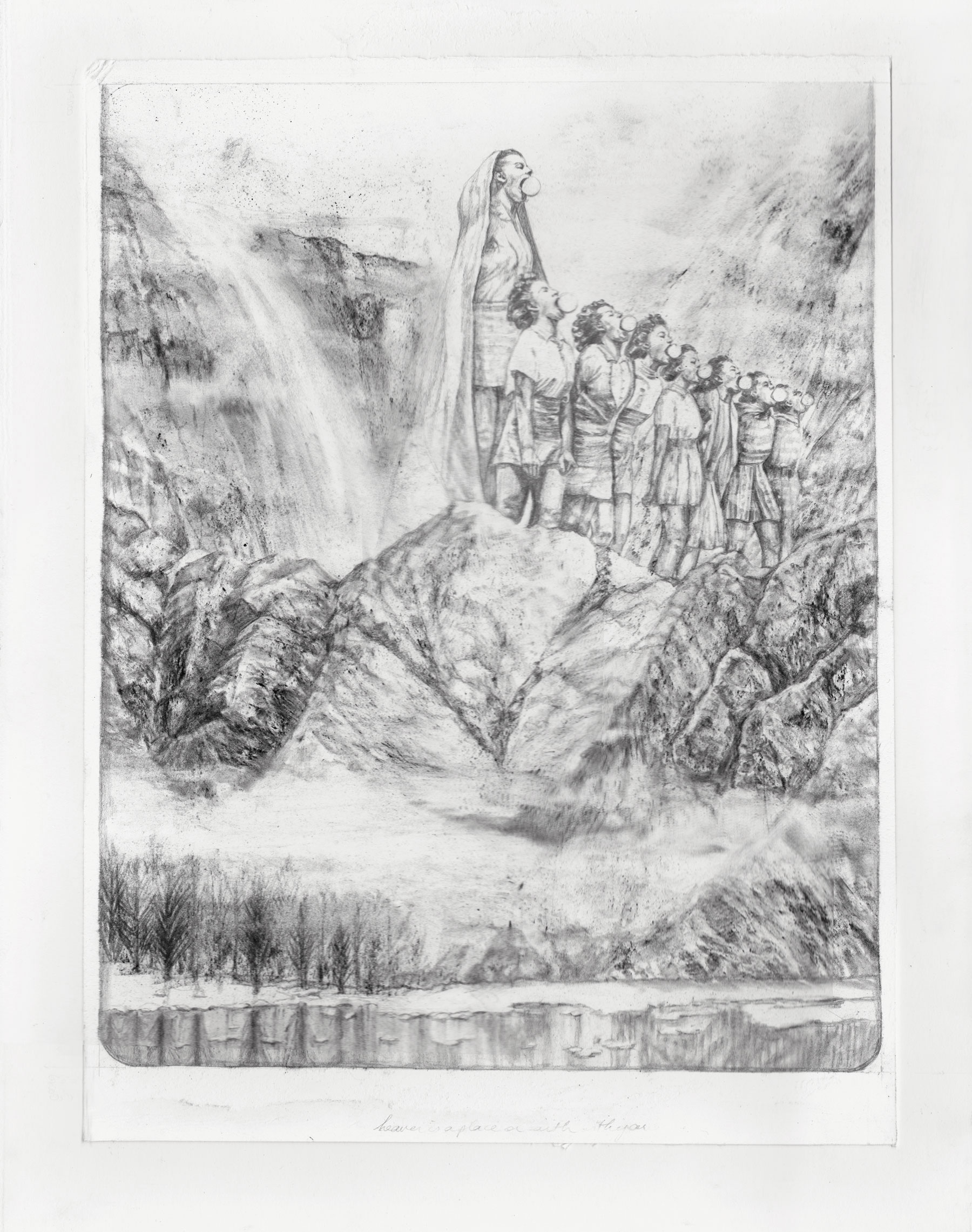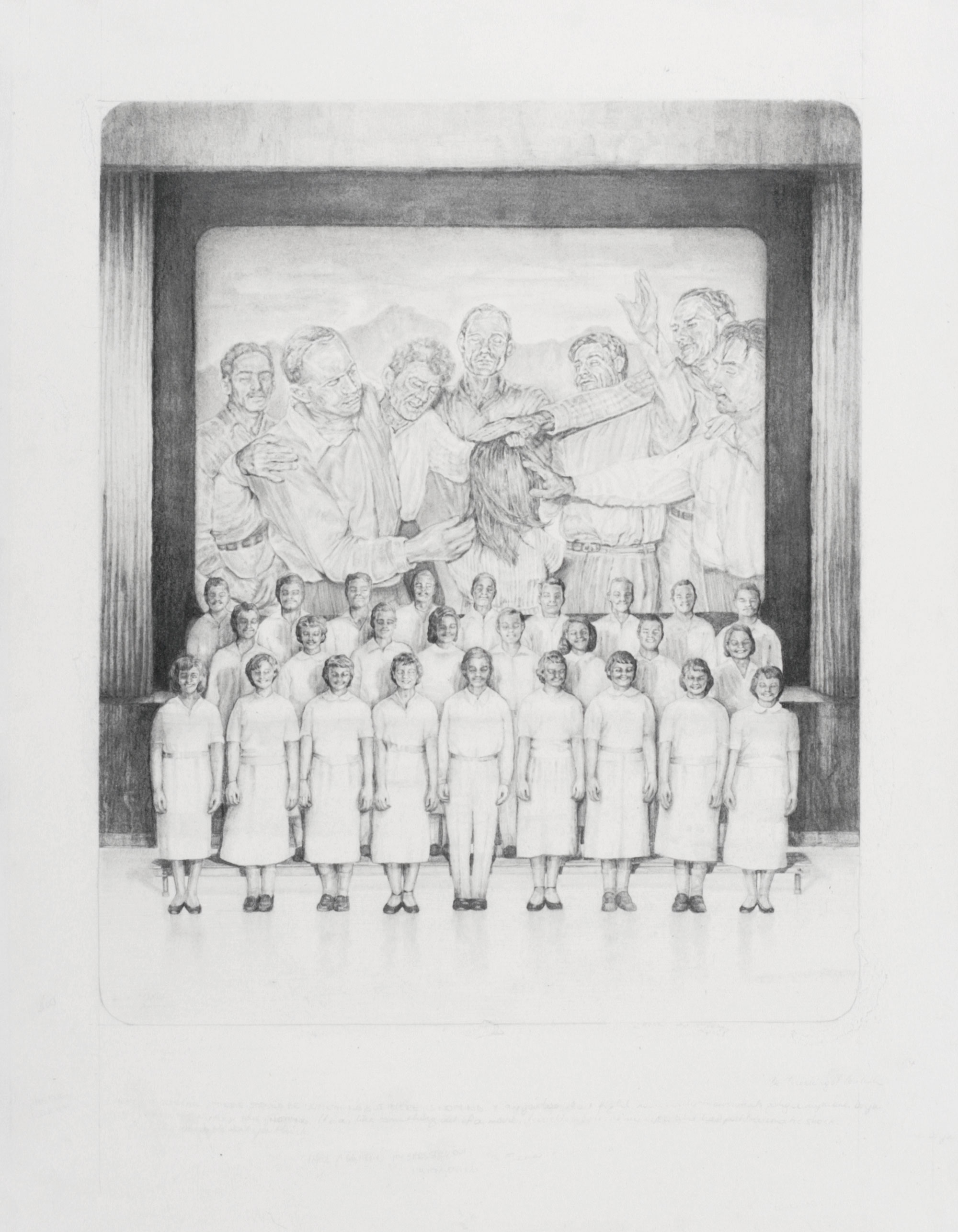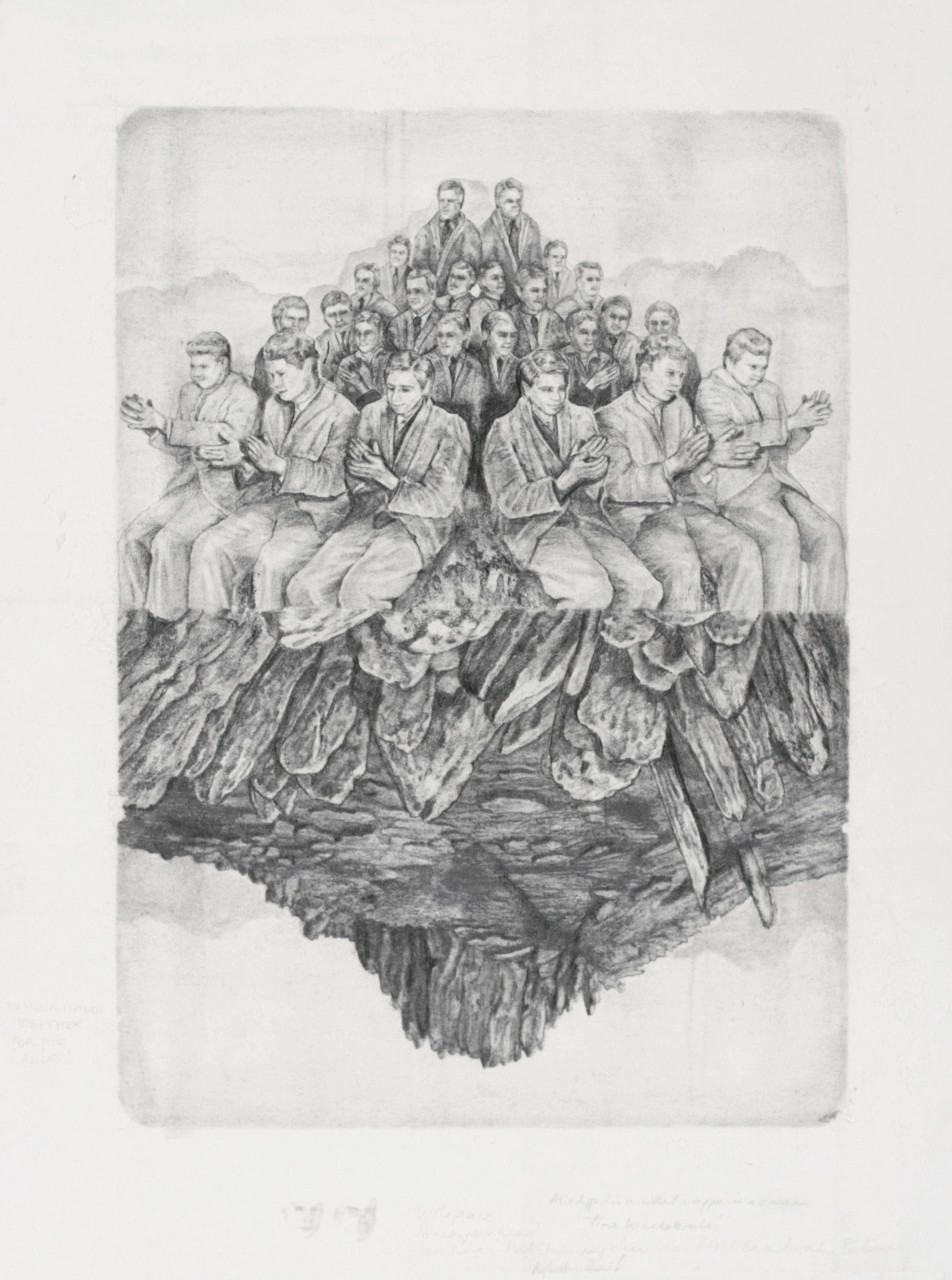CHURCHIE NATIONAL EMERGING ART PRIZE
EXHIBITION ESSAY
GRIFFITH UNIVERSITY ART GALLERY, 2013
BY CAMILLE SERISIER



The people depicted in Becc Ország’s works are a bit odd. They move like a single organism rather than a group of individuals. United in various forms of choreographed performance there is little evidence of individualism. These images have a utilitarian feel similar to communist propaganda posters. Each person has been painstakingly rendered with their own hairstyle and outfit, all with slight variations of a modest and practical uniform. In this way group members are differentiated and the fierce strength of collective action dramatically enhanced. However, the artist feels separate to the work as if considering the people pushing out from within.
In 'Do as we do' a congregation stands before a cinema screen. The projection behind them shows a young girl, her back to the audience, surrounded by a collection of men touching her hair. The overt affection is wrought with threatening sexual undertones. Unlike the ‘happy’ people standing in regimented lines in front of the projection, those within are wild and unpredictable. The viewer is presented with two unnerving alternatives – conform or suffer the consequences.
Dynamics of compliance are readdressed in 'The Sisters' and 'My Other Half'. Instead of targeting renegade individualism the natural environment is placed under scrutiny. Conglomerates of people echo the shape and size of surrounding organic forms. Collectively they challenge the natural world by asserting their dominance.
These group's actions are continually undermined by a pervasive sense of artificiality. Forms stop abruptly and human syndicates experience unreal shifts in scale. By repeatedly inserting visual obstacles the artist subverts the persuasive power of assembly, encouraging individual action and strength.